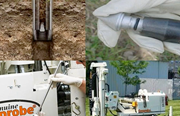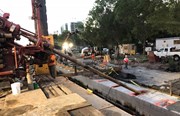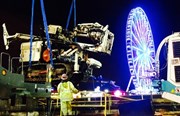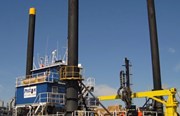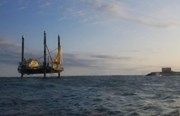How to Know if DPT is Your Best Option
By: Cascade EnvironmentalDirect push technology (DPT) is extremely versatile, and is used for everything from drilling and sampling to site characterization and injection. The problem for many consultants new to the field isn’t knowing if DPT is an option, but if it’s the best option for the project. In this blog post, I’ll cover three questions you should ask to help determine if it could be the right choice.
If you’re unfamiliar with DPT, it may help to get a broader overview of how it works and the pros and cons of using it. I’m presenting a webinar tomorrow on that very topic: Drilling 107: An Introduction to Direct Push Technology. I’ll be happy to answer any questions you have at the end of the presentation.
WHAT DO YOU NEED TO ACHIEVE ON THIS PROJECT?
Boreholes: If you need a hole in the ground, DPT can do it—but performance depends on subsurface conditions and the depth you want to achieve. If you have unconsolidated conditions on your site and require a borehole less than 100 feet bgs, DPT could be a solid option.
Wells: DPT is capable of well installation, but it depends on the rig and tooling available. For example, we have rigs that can spin augers and drive larger-diameter casing, which would be better fit for developing wells than the standard DPT rig set-up. However, DPT is limited to shallower depths, so deeper wells may require a different drilling technology.
Samples: Yes, DPT can provide sampling if outfitted with the right tooling. This is especially useful if you were already planning to use DPT for another task, and would like to hit two birds with one rig.
High Resolution Site Characterization (HRSC): Most HRSC equipment—such as MIP, MIHPT, HPT, UVOST, OIP and WaterlooAPS—can be driven with a DPT rig. An exception to the rule is Cone Penetration Testing (CPT). It requires push technology but cannot tolerate percussion, and works best with heavier rigs that can drive rods deeper into the subsurface. Although DPT can be used for CPT, there are better methods to consider instead.
Remediation: DPT has a strong presence in the remediation field because of its small footprint and versatility—it earns its space on sites that often don’t have much to spare. It’s typically used to drive rods or install monitoring wells, but there are times when it hits its limitations regarding depth; in those cases, auger or sonic technology is usually the go-to.
WHAT DEPTHS DO YOU NEED TO REACH?
DPT typically maxes out at 100 ft bgs, but that range can be significantly impacted by the lithology; more consolidated conditions could limit DPT’s reach. However, if the depth isn’t an issue, this technology can be a cost effective for obtaining soil samples, installing wells, driving HRSC tooling and implementing remediation techniques.
IS THE SITE RESTRICTED OR LIMITED ACCESS?
Like nearly any other type of drilling technology, DPT can be mounted on a track rig to reach many limited access sites. However, the site limitations are what determines if DPT can be a good option once it arrives. Restricted access could mean that there’s a small footprint in which to work—in that case, DPT may be one of your best options. However, if the site is indoors with a low ceiling, that may hinder this technology’s efficacy—and in those cases, I would probably recommend a compact sonic rig instead.
DPT is a powerful and versatile technology that can be used at almost any stage of an environmental project—but it isn’t right for every situation. Asking yourself these three questions at the beginning of every project for which you’re considering DPT should help you land on the technology that’s most suited for your needs.
If you have additional questions, join me tomorrow for Drilling 107: An Introduction to Direct Push Technology. If you can’t make it, register anyway and we’ll send you a link to the recording.
And if you have an upcoming project and are considering DPT, let me or a colleague help.






